by Carol A Westbrook
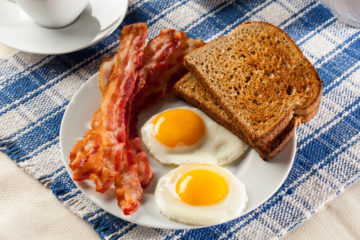
I admit it. I am a breakfast skipper.
I’m not ashamed of it, and I don’t force myself to eat a morning meal just because it’s the societal norm. Sometimes, for the sake of sociability and good conversation, I’ll sit down to breakfast and pretend to nibble at a piece of dry toast, or push eggs around my plate. The fact is, I just don’t feel hungry at breakfast time.
About 10% of adults are like me. Their inherent biorhythms dictate that they are not hungry at breakfast time. I could never understand why the other 90% regard breakfast as the most important meal of the day, or why it is good for a person’s health to eat breakfast. The classical American breakfast of 2 eggs, bacon, and toast with butter and jam has almost 600 calories, 30 g of fat, and 1.4 g of salt! That’s hardly a nutritious start to the day. Fortunately, surveys have shown that most people prefer a bowl of cereal and milk, which has only about 250 calories.
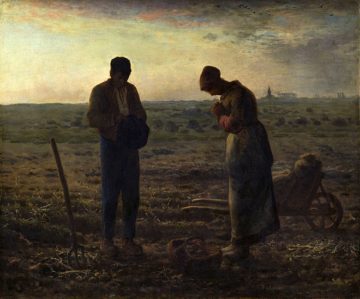
In the US, most people eat breakfast before they begin their day, but that was not true for most of humanity through the ages. Although the ancient Greeks ate 3 meals each day, including a breakfast of bread soaked in wine at the very start of the day, early breakfasts did not continue through the Middle Ages. In the Middle Ages, the serfs started their day without food, since they were not allowed to eat before daily Mass. After Mass, they ate a large meal to supply the calories they would need for their upcoming manual labor. This meal was called the “break-fast meal” or just breakfast.
Later, breakfast became an aristocratic status symbol, when wealthy middle and upper classes built their grand houses, many of which had a “breakfast room.”. Here they could begin their day with breakfast. With the coming of the Industrial Revolution, and normalization of working hours, lunch and breakfast both became integrated into the working day, and three meals a day became the norm.
If you have ever watched the PBS show, Downton Abbey, you will be familiar with the lavish buffet which the servants put out every morning.
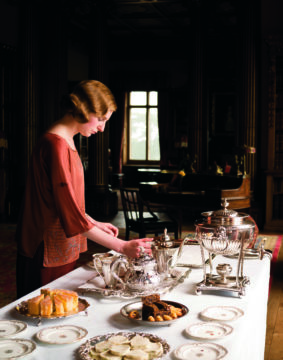
This serialized drama takes place in Edwardian times, with its strict social rules. The day began at 8 o’clock AM, with The Lady’s Maid or Valet bringing a Breakfast Tray of tea and toast. The residents and guests would use the time to dress for the morning, and go downstairs at 9:30 to the breakfast room, with a buffet offering everything from eggs and toast to kedgeree (a casserole of kippered herrings)! Here, they can sit, socialize with the houseguests, or read the paper, satisfying their hunger with anything from a large serving of breakfast, to a small cup of tea with milk. 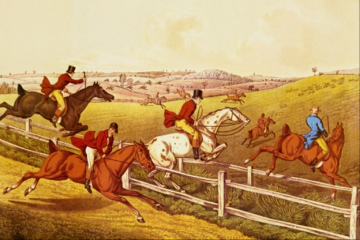 This schedule would be closely followed unless it happened to be a day of sport, a day to ride to hounds or to shoot pheasants, for example. Then, a small breakfast would be eaten early, and after the event they would eat the larger, more lavish Hunt Breakfast.
This schedule would be closely followed unless it happened to be a day of sport, a day to ride to hounds or to shoot pheasants, for example. Then, a small breakfast would be eaten early, and after the event they would eat the larger, more lavish Hunt Breakfast.
The tea they were drinking was probably Earl Grey tea. This tea is named after Charles, the second Earl Grey, the Prime Minister of the United Kingdom from 1830 to 1834. He introduced this delightful, bergamot-flavored tea to Europe.

The story is that Charles saved the life of a Lord during a trip to China. As a thank you, this lord gifted Charles Grey with a recipe for with some fragrant black tea, and a recipe for the tea, which was scented with the oil of bergamot oranges.
Breakfast cereal was invented in 1863 by a doctor and health reformer named James Caleb Jackson. Jackson, like most health authorities of the time, believed that all illnesses arose in the digestive system. He ran a health spa in upstate New York, and studied the concept of cold cereal as a cure for illnesses. His cereal was made from graham flour which had been baked into a brittle flat bread, and then crumbled and baked again; the cereal was called “granula” and had to be soaked in milk overnight before it could be eaten. Needless to say, granula never succeeded as a product, but the concept remained of eating cold cereal in the morning as a healthy habit.
Another “pure food” advocate who ran a health spa, John Harvey Kellogg, developed his own “granula” cereal out of a mixture of wheat flour, oatmeal and cornmeal. Jackson sued Kellogg, who then renamed his invention “Granola.” His brother, William Kellogg, helped him commercialize the idea, which was eventually grown into a breakfast-cereal empire. In 1894 the brothers, working together at the Battle Creek
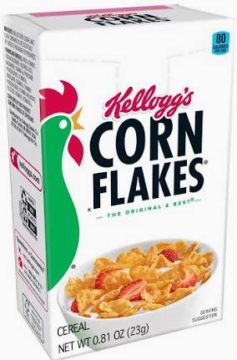
Sanitarium, invented a process to flake corn grains and toast them, thus producing another breakfast cereal, Kellog’s “Corn Flakes”. They are still in production today, and have become one of the most popular cold cereals world-wide!
At about the same time, a Swiss physician and nutritional pioneer, Dr. Maximilian Bircher-Benner, developed Muesli to help treat his ill patients. His original Muesli came from a traditional recipe in the Swiss Alps; it consisted of oats (rolled or flaked,) raw apples, condensed milk, nuts and lemon juice. It is eaten with milk. Muesli is popular today throughout Europe, especially in Switzerland.
Throughout Europe and the US, at the time that these health-food cereals were introduced, the standard breakfast was a cholesterol-laden hot meal of eggs, bacon, sausage and beef or chicken, plus cooked grains (hot cereal), biscuits, toast, butter and jam. Muesli, corn flakes and granula were developed in contrast to those large meals, to provide a healthy alternative which was low in fat and cholesterol, and high in whole grains and fiber, two nutrients which were seriously deficient in the American diet.
These cold cereals were quick and nutritious, and they caught on quickly, with many folks starting their day with a bowl of corn flakes. Soon, other types of boxed, dry cereal were introduced, and the marketers began to modify them, so they would taste better than competitors. The first step was to sweeten them.
The first sugared cereal was “Ranger Joe Popped Wheat Honnies”, which appeared in the late 1930s, but it was only after World War II that sweet breakfast concoctions took off. Sugar Crisp was also an early entrant, in 1949.
Kellogs kept up with the sugar trend, introducing frosted flakes in 1952. Even healthy cereals like spoon-size Shredded Wheat became Frosted Minnie Wheats! Some makers even put candy in their cereals—the prime example is Lucky Charms, which has marshmallows in the shape of charms and toys! If you check the grocery store shelves, you will see that it’s hard to find an unsweetened cereal.
The other major modification of breakfast cereal was reduction in the amount of fiber they contained. Fiber is the part of plant foods (fruits, vegetables, grains) that our bodies cannot digest or metabolize. Fiber is an important part of our diets because it helps keep us regular, helps lower cholesterol, regulates blood sugar levels, and prevent intestinal cancer.

Ironically, fiber is the main reason whole grains are eaten, and eating who grains processed to remove the fiber has been removed has defeated this purpose. There is a downside to fiber; it causes flatulence and diarrhea. That’s because the human body relies on intestinal bacteria to digest fiber; some of these bacteria cause gas If you are used to a high fiber diet, or fiber is introduced slowly into the diet, over 2 or 3 weeks, your gut becomes colonized with “good bacteria” that don’t produce flatulence. So cereal manufacturers made their offerings more acceptable by lowering the amount of fiber in their product. Some cereals, like “Sugar Pops” have no fiber at all, while our beloved, healthy Corn Flakes now have only 0.9 g of fiber per cup of cereal! Compare this to shredded wheat, which has 6 g of fiber per cup, or Meusli, which has 10 g of fiber per cup!
What we eat for breakfast, and when we eat it, is determined more by our culture than by our biorhythms. A breakfast of cold cereal and milk was easy and quick, which is especially important if you have a daily commute, or a train to catch. But not everyone has the luxury of sitting down with the family for breakfast in the morning, even if only cereal and milk. Breakfast foods that skipped the milk entirely, with items like pop-tarts and granola bars, have become a breakfast mainstay. And of course, the fast-food industry offered breakfasts to eat in the car while driving to work or school, such as McDonald’s extremely successful “Egg McMuffin”. Competitors soon caught up with their own breakfast sandwiches, like Burger King’s “Croissan’wich” and Wendy’s “Baconator.”
The best example of breakfast time being out of sync with biorhythms is brunch.
Weekend brunch, describing a meal that is a hybrid between breakfast and lunch, has suddenly become an acceptable social event. As a meal, however, it’s a failure. It’s too early for the breakfast skipper, who won’t be hungry for lunch until noon. And it’s too late for the breakfast eater, who has become ravenously hungry by then. But as a social gathering, it is finding its place in our society.
Brunch was first proposed in 1895 by the English author Gary Beringer, who proposed the meal in his essay, “Brunch: A Plea.” He jokingly suggested the combined meal to be a relief for those whose Sundays were spent tending to hangovers from the night before. But brunch has evolved into something else. All you have to do is walk into a popular restaurant mid-

morning on a weekend day, and you will see children running around and yelling, while their parents are quietly sipping their Bloody Marys or Mimosas, enjoying time spent with their friends, who are also parents of toddlers. As one of these parents pointed out to me, brunch is one of the few times they can get together with friends for a drink, without having to get a babysitter!
But brunch has found another niche in society as the one
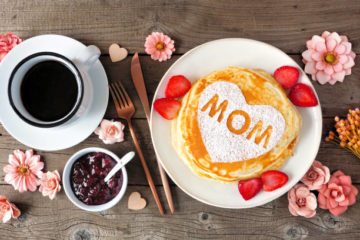
thing you must do with Mom on Mother’s Day: Take her out to brunch!
